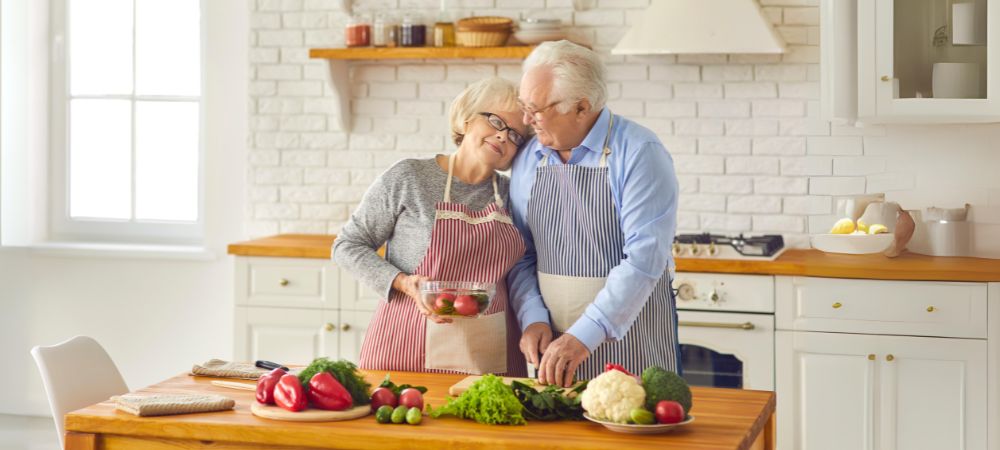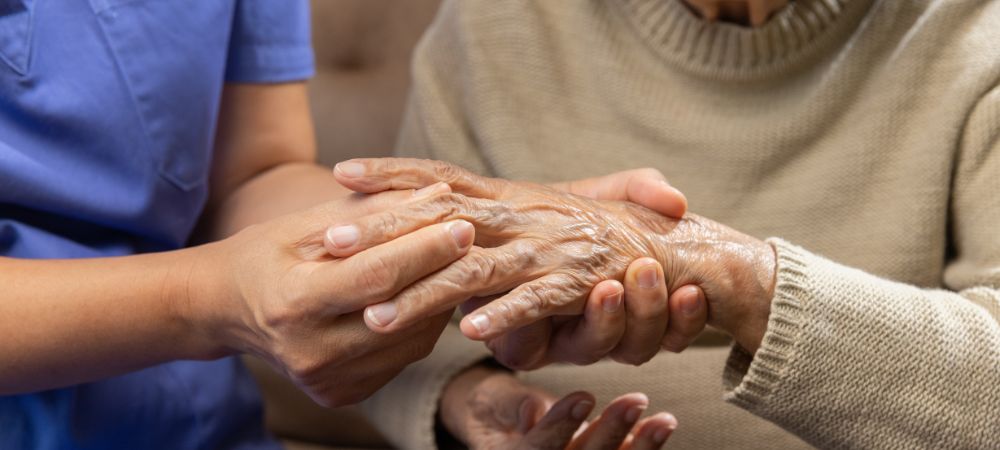Recently updated on May 14th, 2025 at 01:30 pm
Arthritis is one of the most common health-related problems that one experiences as one grows older. Millions get afflicted with it, and it is crippling to the extent of joint pain, stiffness, and a general reduction in mobility.
If Arthritis worsens, you should always seek arthritis home care services or senior home care to get skilled professionals to support and help with day-to-day activities.
In the case of senior health and Arthritis, prevention is not about avoiding pain. It’s about sustaining independence and continually associated with one’s favorite hobbies.
This article discusses practical approaches to arthritis prevention tips for seniors, referring to actual examples when appropriate within a broad context of symptoms for managing arthritis symptoms in older adults.
How does Arthritis affect seniors?

Arthritis is much more than a condition of aging. It is a disease of the joints that brings about a variety of painful and inflammatory symptoms.
To seniors, it could mean everything from hassles while trying to get out of bed in the morning to taking walks with the dog or playing with the grandkids.
Many have familial predispositions to Arthritis In their early life. Other seniors develop it because of obesity or a general lack of exercise.
How to Prevent Arthritis in Seniors?
Prevention of Arthritis or management of its symptoms is not an easy thing. There are many types of Arthritis. The way we live reflects on how our joints feel, and the goal will be protecting them from unnecessary strain.
Tips for Preventing Arthritis in Older Adults:
- Managing a healthy weight:
The best thing you can do to prevent Arthritis is to maintain a healthy weight. Extra weight applies additional pressure.
The more weight you carry, the greater your stress on these joints, and the faster you will advance your Arthritis.
Case Scenario:
Susan had always loved baking. At 72 years old, she found it increasingly difficult to stand for long periods waiting for cake in the oven. Susan had recently learned that her arthritis symptoms seemed to worsen with all her extra weight, causing knee pain.
She has begun incorporating healthier meals and low-impact exercises into her daily routine. After a few months, her knee pain began to subside, and she was once again able to stand and bake.
- Avoid Smoking and Alcohol:
Tobacco and excess alcohol cause joint pain. Alcohol may exacerbate inflammation and increase the chances of having Arthritis.
Smoking slows down blood flow in the joints, ultimately slows down anti mechanism.
Case Scenario:
James was 65, had smoked most of his life, and had developed Arthritis in his hands. Since quitting, he had noticed a remarkable return of flexibility and strength in his hands.
Such a simple change in life allowed him to continue doing all the things he loved, like gardening and carpentry.
How Exercise Prevents Arthritis?

Probably one of the best options to hold your joints healthy and strong is regular exercise. The exercises targeting arthritis prevention serve to keep the flexibility, improve muscle strength, and reduce joint stiffness.
- Low-Impact Cardio:
Some of the best types of exercises for a senior in their twilight years who happens to struggle with Arthritis include low-impact cardio workouts, such as walking, swimming, and biking.
These exercises will be Cardiopulmonary Rehabilitation. This involves the monitoring of cardiovascular and respiratory changes in disabled elderly people.
Case Scenario:
Margaret was a 70-year-old granny who developed mild knee arthritis, which, over time, started to limit her functionality and further made her feel inadequate playing with her grandchildren.
The doctor recommended swimming as a low-impact form of symptom-free exercise. After some months of regular swimming, she felt springier and could play comfortably with her grandchildren without any pain.
- Strength Training:
Building the strength of muscles, especially large ones around the knees, hips, and back, helps support the joints. The idea would be to emphasize light weights or some forms of resistance-training exercises that work around the muscles of the affected joints.
These exercises would reduce the load on the joints and may prevent or delay arthritis symptoms.
Case Scenario:
Paul, 66, is a retired person who started a light and easy weight training exercise using light dumbbells; this would help him build up the muscles of his legs.
As the muscles of his legs became stronger, the knees became more stable, and the pain he had earlier due to osteoarthritis reduced considerably.
- Stretching and Flexibility Exercises:
Stretching itself is very important to prevent joint stiffness. Yoga or some sort of light stretching added to the day will help a senior feel more comfortable and mobile in their body.
Case Scenario:
Linda, 74, since the Arthritis in her hips, no longer could easily stoop to tie her shoes.
She had started adding some light stretching and yoga to her daily routine, improving flexibility and lessening the discomfort in her hips to a point where one could correctly say she was moving around more.
How Diets Prevent Arthritis Among Elders?

Food intake is important in relation to joint health. While there are certain nutrients that protect against Arthritis, others may provoke it.
A diet for preventing Arthritis in seniors should aim at diminishing inflammation and promoting healthy joints.
- Omega-3 Fatty Acids:
These are a group of fatty acids mostly, it is oily fishes like salmon and mackerel, flaxseed, and walnuts that have anti-inflammatory properties.
Case Scenario:
Situation Thomas, 69 years old, noticed that the colder the weather, the worse his Arthritis would get.
He is able to say that since increasing his omega-3 intake of foods like salmon and chia seeds, especially in his knees, his joint pain and inflammation have begun to become less nagging.
- Antioxidant Foods:
Consuming fruits and vegetables, particularly dark leafy vegetables like spinach, kale, and broccoli, contain antioxidants that decrease inflammation.
Indeed, such foods can protect the joints from further damage by oxidative stress.
Case Scenario:
Scenario: Eva, 67, includes vegetables and fruits in her diet. Over time, her morning joint stiffness, especially in her fingers, was not as pronounced.
- Calcium and Vitamin D:
These are probably two of the most important minerals for the bones. Calcium is very crucial in the development of strong bones, as Vitamin D enhances the absorption of calcium and aids in the maintenance of strong bones. Good sources of it could be milk, leafy vegetables, and fortified foods.
Case Scenario:
Robert, 72 years old, had problems with his lower back because his bones were weak. The doctor prescribed raising his intake of calcium and vitamin D, and so he started drinking fortified milk and supplementing them.
After a few months, he could feel that he felt much less pain in his back and improved his general mobility.
How to Manage Pain Among Older Adults with Arthritis?

Even with the most efficient forms of prevention, some seniors may develop Arthritis. However, for those in which symptoms of Arthritis do set in, early management is usually crucial for ensuring better mobility while minimizing the pain associated with the problem.
Proactive symptom management of such symptoms in the process will ensure quality of life and participation in daily activities. Following are some ways to manage arthritis symptoms. The key is:
- Medications and Supplements
Medications and supplements can go a long way in arresting arthritis pain and putting a check on its symptoms. Following is the list of some usual recommendations that may be considered by the elderly:
- Over-the-counter pain relief: Pain brought about by mild to moderate Arthritis is treated with over-the-counter drugs such as ibuprofen or acetaminophen; these help reduce inflammation and relieve discomfort.
- Topical Treatments: Creams or gels, which include ingredients like menthol, capsaicin, or lidocaine, may be helpful in the treatment or mitigation of Arthritis through their local action on the joints. Topical treatments can be massaged right into the skin to reduce the localized pain and inflammation.
- Prescription Medications: Larger symptoms of arthritis warrant physicians to prescribe the use of stronger anti-inflammatory medications or DMARDs. These medications work to slow the growth and progression of Arthritis and provide more substantial pain relief.
- Supplements: There are plenty of natural supplements which, if taken, improve the symptoms that come with Arthritis. These include:
- Glucosamine: A natural compound that is found within cartilage, glucosamine may provide additional protection for the joints by slowing the breakdown of cartilage.
- Turmeric: It’s an anti-inflammatory dietary supplement that promotes the reduction of inflammation and relieves pain in the concerned joint.
- Fish Oil/Omega-3 Fatty Acids: Swelling of any type is known to be reduced by these healthy fats. They may offer some relief from the symptoms of Arthritis.
- Assistive Devices
Assistive devices can provide the needed support when Arthritis begins to limit mobility or makes particular tasks difficult.
- Canes and Walkers: This is a device that assists balance and reduces strain on the joints to make it easier to walk and stand without pain for longer periods of time.
- Bracing at Joints: For some joints, especially knees, elbows, or wrists, theuse of a brace may support them, stabilize the joint, and relieve the pain emanating from Arthritis.
- Raised Toilet Seats: These raised toilet seats help senior citizens to sit and stand while putting less stress on the joints.
- Shower chairs and handrails: These promote bathing by offering safety, comfort, and support to the bathroom, particularly to those seniors who have Arthritis of their legs or lower body.
- Exercise and Physical Therapy
These children usually get along great when being kept active through physical therapy and can have great joints themselves, making them less stiff and more flexible.
- Targeted Exercises: According to the type and severity of Arthritis, a physical therapist may prescribe certain targeted exercises. The exercises will help maintain joint functionality, reduce pain, and increase mobility.
- Water Aerobics: Water aerobics allows a full-body workout without the strain on joints.
- Stretching: Mild exercises in yoga or tai chi will help improve flexibility, create better blood flow inside the joints, and relieve stiffness to give respite to arthritis pain.
- Hot and Cold Therapy
This hot and cold therapy can alleviate arthritis symptoms in effective way.
- Cold Compress: The application of cold compress like ice packs decrease the inflammation of joints.
- Heat Packs: Application of a warm compress to stiff and contracted joints, higher blood flow and pain relief by relaxing muscles.
- Change in Lifestyle
The most modern drugs and instruments cannot fully replace some lifestyle changes to prevent Arthritis in order to alleviate arthritis symptoms.
- Pacing Activities: It is also important that elderly persons with Arthritis avoid overexertion by taking frequent breaks to rest and by pacing activities during daily living. This helps a person pace their exertion to manage their fatigue and to avoid placing unnecessary strain on joints.
- Proper Footwear: He should wear shoes that provide him with good support and cushioning to reduce joint pains, mainly in the knees, hips, and lower back. High heels or lack of proper arch support in shoes is just a big no for seniors.
- Dietary Changes: Eating an anti-inflammatory diet helps manage Arthritis. Omega-3, vegetables, fruits, and proteins can contribute to lesser inflammation in the joints, while avoiding processed foods will minimize flare-ups.
- Senior Wellness and Arthritis Prevention
Wellness encompasses all kinds of health: mental, physical, and emotional. Arthritis management is not merely about exercises and diets; it involves staying engaged as well as keeping stress to a minimum.
- Stress Management: Chronic stress flares up the symptoms of Arthritis. Deep breathing with meditation and other techniques of relaxation can reduce the amount of stress and inflammation.
- Social Engagement: Equally important are the mental health and emotional support associated with staying socially active. There are several ways that social engagement helps manage Arthritis, whether it be joining a club, doing some kind of volunteer work, or spending time with family.
Conclusion:
In conclusion, a good diet, regular exercise, weight management, and reduction of stress may go a long way in the prevention and management of Arthritis among senior citizens. With these simple tips, seniors can minimize the risk of having the disease or alleviate the symptoms once they have it.
After all, small steps now may be the key to a very active and enriching tomorrow. Seniors can be proactive in order for them not to let Arthritis get the best of them and live life to the fullest. For added support and guidance, consider Loving Homecare to help maintain independence and comfort in daily routines.

